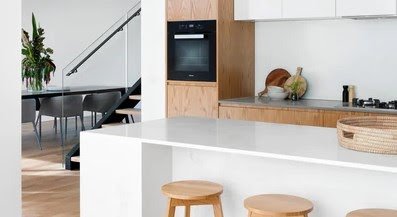The kitchen is the largest consumer of electricity. The refrigerator alone “eats up” up to 30% of all electricity consumed by an apartment or house. One kilogram of rubbish is produced by each human being on a daily basis; about 2 billion tons of waste is created each year. 16 percent of the population from nations with a good level of life generates a third of all garbage. Furthermore, trash production is expected to rise by a further 70% in the coming years, according to current projections.
However, environmental stewardship is quickly rising to the top of the priority list for many businesses. Moreover, the green economy has the potential to become the dominating sector of the next decade, attracting investment, spawning start-ups, and resulting in significant technical advances.
The Royal Craft Wood company (royalcraftwood.com) has collected life hacks on making the kitchen more energy-efficient and environmentally friendly.
IMG URL: https://cdn.shopify.com/s/files/1/0563/7721/3136/articles/Photo_for_Blog_2_1_400x.jpg?v=1624441763
CHOOSE A KITCHEN SET
Table of Contents
How to make a kitchen eco-friendly? Choosing materials. The most environmentally friendly option is a kitchen facade made from renewable wood. The material must be accompanied by an FSC certificate. It indicates that the producer is planting new trees to replace those he cut down.
It is ideal if the countertop and other surfaces are stainless steel or glass. 70% steel and 95% glass can be recycled and reused. Kindly visit Best Plumbing Job Management Software.
WE BUY HOUSEHOLD APPLIANCES
How to make a kitchen eco-friendly? Choosing appliances. Pay attention to the stickers on the packaging of household appliances. They are painted with multi-colored arrows with letters from A to G. This is an international label; it shows how energy efficient specific gadgets are. Our choice is the top green arrow.
It should be written A, A+, A++, and A+++. Each plus means a 10% increase in efficiency compared to class A.
A refrigerator labeled A++ consumes three times less electricity than one labeled D. A class A electric stove “eats” half the energy compared to a class D stove.
SAVE WATER
How to make a kitchen eco-friendly? Save water. When washing dishes by hand, fill one sink (or basin) with water mixed with detergent. Wash dishes there. Rinse in another sink under a gentle pressure of warm water. This method will save up to 60 liters of water per person per day.
Only use the dishwasher with a full load. The same volume of water is spent on an entire machine or on a third filled. By the way, when fully loaded, a dishwasher saves a family of four 7,800 liters of water per year (compared to washing dishes under a tap).
COOKING FOOD
How to make a kitchen eco-friendly? Cooking food. Clean the bottom of the dishes in time. A frying pan with soot requires 60% more energy to heat than a clean one.
Keep the lid on the pot when cooking. Cooking time (and therefore energy consumption) increases by 20-30% in an open pan.
By the way, electric stoves with metal heating surfaces are the most inefficient. Cookers with a ceramic work surface are 30% more economical, induction – 50%.
Avoid Teflon-coated pots and pans. Teflon contains polytetrafluoroethylene (PTFE) and perfluorooctanoic acids (PFOA). At high temperatures, these chemicals give off toxic fumes. Alternative – stainless steel, cast iron, glass.
Ready for gas? Please note: the burner’s flame must not go beyond the bottom of the cookware. The curved base of the pot or pan leads to an overrun of gas by 5-10%.
IN NUMBERS
A small gap in the refrigerator seal increases energy consumption by 20-30%. The seal must fit snugly against the body.
Light-colored walls, curtains, and cleanly washed windows reduce 10-15% lighting costs.
An aerator installed on a faucet reduces water consumption by 20%. How it works: The aerator saturates the water flow with the slightest air bubbles. This contributes to the weathering of chlorine compounds. Bubble-rich water cleans dishes and hands better. Due to the constant admixture of air, the pressure remains constant, and the water consumption is reduced. Without an aerator, the water flow from a tap can reach 15 liters per minute, with a nozzle – 7-8.


